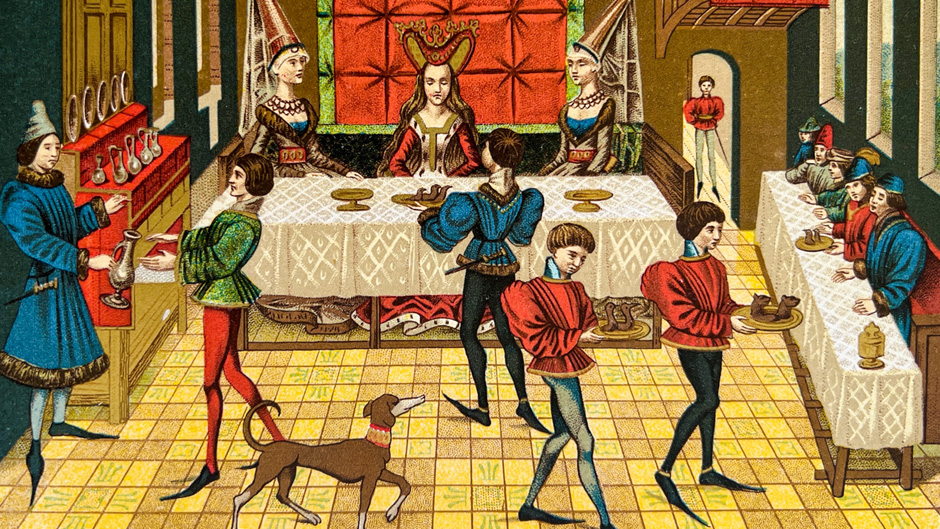People have failed at love, feared getting old, worried about their weight, and loathed their jobs for almost as long as humans have walked upright.
In search of answers to these woes, they have sought advice from the diverse and endless army of those who would offer it. Or they have practiced a form of preventive medicine—watching what they eat, how they sleep or exercise, and reflecting on their routines.
That global self-help industry today is valued at some $45 billion.
“We know that people have practiced preventive medicine without the help of physicians since the beginning of time, but because those wellness practices were never written down so much is lost in history that we don’t know about,” said Noa Nikolsky, an assistant English professor in the University of Miami College of Arts and Sciences.

Yet Nikolsky, a specialist in medieval literature and the history of science and medicine, has focused her research on a new genre of writing—Regimens of Health—that emerged in Europe following the 12th century Renaissance. From the 13th century onward, these quirky healthy living guides changed the well-being landscape, especially for common people.
“There’s an explosion of scientific writing and an influx of new knowledge. We begin to see a lot of texts about prevention, so suddenly this wellness advice becomes textualized in a big way,” said Nikolsky.
And these guides—unlike previous ones written by or intended for physicians or the wealthy—are written in vernacular language and intended for lay people.
One of the clues that these texts are intended for a lay audience is that many of these regimens include the caveat that if you follow this advice, you won’t need to see a physician or medical professional—an interesting inclusion given that many of them are written by doctors.
“They’re speaking to you, you, you and saying that by reading this book, you have the power to get what you want. They’re putting agency into the hands of people,” Nikolsky said.
Eating eels is bad for the voice
As those who know anything about medicine will attest, and
Cheese and eel are harmful when eaten together in great quantity,
Unless you drink wine often.
“Preventive medicine is super important because curative interventions are very risky and before you could do surgery painlessly with anesthetics, heavy drugs were used that most people didn’t have at their disposal,” Nikolsky said. “But preventative medicine is something that you can do before any of these curative interventions.”
This new genre evolves over time to become “super popular.” Nikolsky attributes their popularity in part to the rise of universities and increasing literacy among the populace, which creates a new kind of systemization of knowledge and more of a market for these texts.
“It’s not just that there is more medicine being practiced, it’s that these topics are finding a place in text, and you have these texts circulating that are preventative,” she said.
Nikolsky described the “regimens” as practical guides for daily living.
“This is a document to hold in your hand that gives you day-to-day rules for health. This is not about being a good Christian—it really is just health. They’re giving practical tools to have a healthy body. And that’s why they look very much like self-help books,” she said.
In the Middle Ages, universities in particular were the learning hubs for physicians, but while the information in these regimens emanated from the universities and, while in many cases the authors were unknown, they were not written for university-trained people or those with access to formal education.
“There are a lot of practitioners in public areas—barber surgeons, apothecaries, shamans, and folk healers. They have knowledge, or also you could consult your neighbor or ask a friend who might have experience with a certain illness. So, there’s a lot of different levels on which medicine was practiced,” she noted.
As a researcher, Nikolsky is focused on the question of whether the texts constitute medical practice.
“You’re not consulting with someone, not having a medical encounter with a physician. But what you’re doing is reading this medical text as a medical encounter between person and text, rather than between person and patient,” she said.
Because she is not a medical professional, Nikolsky refrains from commenting on whether the advice in the regimens is sound medical advice.
“Regardless, these texts do teach you to pay attention to different parts of your body and to your habits—exercise, diet, sleep—that impact your physical and emotional health,” she said. “So, our notion of psychosomatic health—the understanding that there is a holistic relationship between mind and body—is not as modern as we might think.
“Whatever the medical merits of the actual advice, this is valuable to think about, even if you’re not implementing the advice itself,” she said. “The rules endow you with agency—that your health is in your hands. They encourage us to be responsible for our own bodies,” said Nikolsky, whose current book project explores the rise of self-help writing and preventative medicine in late medieval Europe.

